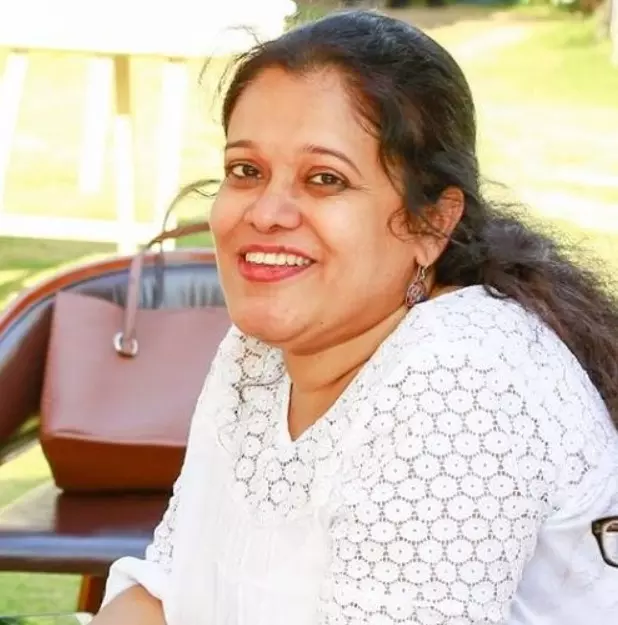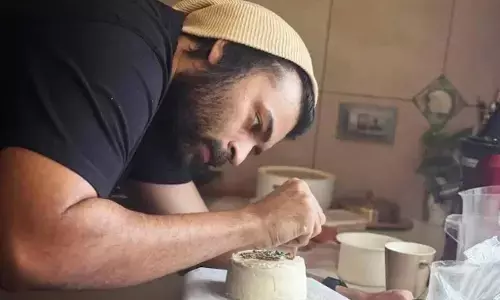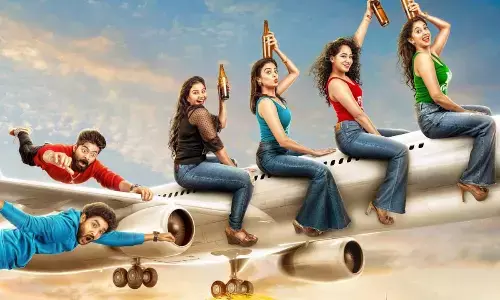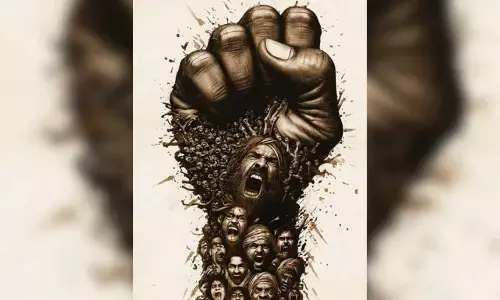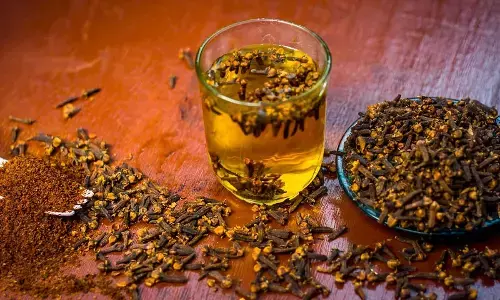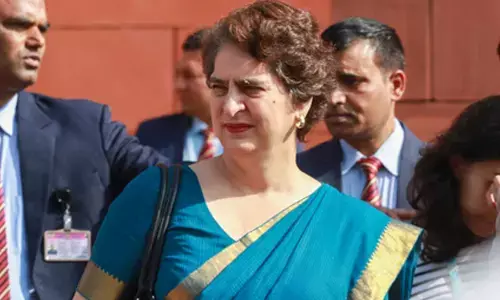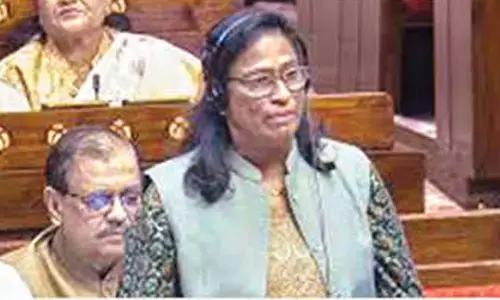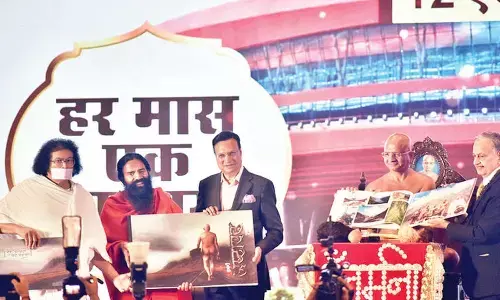Mastering the master
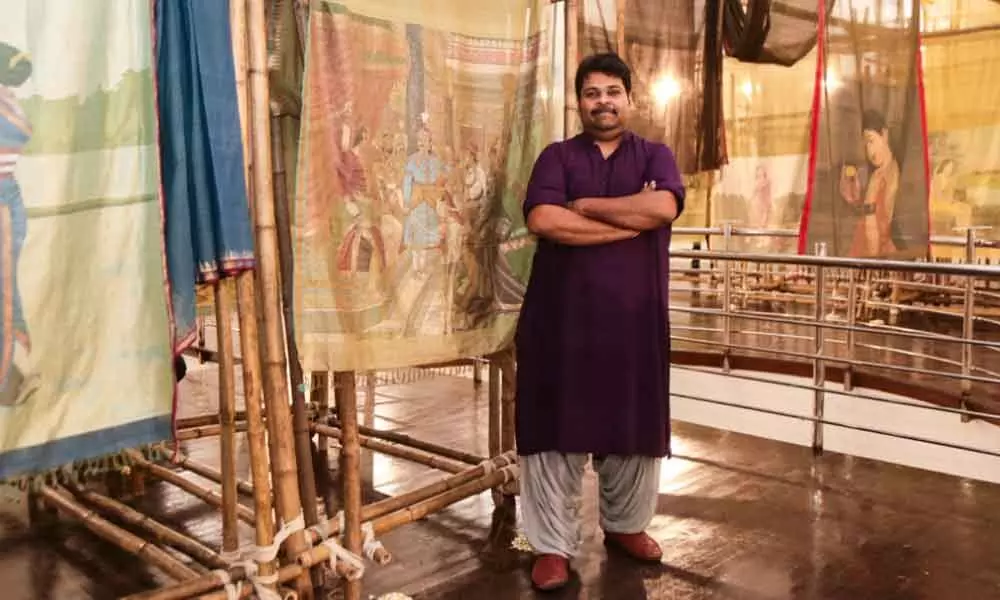
The timelessness of Raja Ravi Varma's paintings is reinforced each time an artist of our time reinterprets them in his style. Hyderabad-based designer Gaurang went a few steps ahead and embarked upon the monumental task of recreating the paintings in Jamdani on Khadi sarees
Raja Ravi Varma – the legendary painter of the yore has been intertwined into our culture through the imagery of our divinity, and the traditions and way of life of the royalty of his times saved for posterity on his canvas. He has used his western artistic influences to revisit Indian mythology. The timelessness of his paintings is reinforced each time an artist of our times reinterprets Ravi Varma's paintings.
An original painting of 'Vishnu on Sheshnag' an iconic and seminal representation of Raja Ravi Varma's work, depicting the classical iconography of the deity represented with his wives, Goddess Lakshmi and Goddess Bhumi on either side, on the seat of the Sheshnag, the snake king; was displayed this year at Delhi Art Fair. The entire room had this one painting, owned by Crayon Art Gallery and had major foot falls. On July 12, 2019 Ravi Varma Fine Art Lithographic Press was launched on the occasion of his 125th birth anniversary. V Ganesh Shivaswamy, a collector of Raja Ravi Varma's lithographs and an expert on his paintings mentioned that it was indeed the prints that contributed majorly to the Master artist's continuing fame. It was the prints in every form that made their way into every Hindu household.
Recently a photographer G Venket Ram in his own way recreated Ravi Varma's paintings by roping in eleven personalities that included famous actors and dancers as models dressed to T like the painter's muses. His photographs broke the internet and he was much applauded for the sensibility he displayed in his photographs that went on to be featured in a calender.
When it was announced that popular Hyderabad-based designer Gaurang Shah recreated Raja Ravi Varma's works on Khadi sarees and the same were displayed in New Delhi on October 2, and reviews started coming in on how he has used the Srikakulam Jamdani technique to embroider the paintings on to the sarees, it was surely exciting. It was not until the sarees came back to Hyderabad and the designer showcased them in a museum like display at Saptaparni alongside the blown-up prints of the paintings used for reference; that one could fathom the enormity of the project. You have to see them to believe!
Recreating masterpieces
Exquisite Jamdani technique of weaving that is unique to Srikakulam of Andhra Pradesh where like in Paithani, a paper with drawing is placed underneath and the weaver replicates it inch by inch, was used; 600 natural dyes were produced to match the colourful palette of Ravi Varma and 200 kilos of silk yarn was dyed and it took over 3 years to complete weaving of 30 sarees. Each Khadi saree, with unique pallu with famous Ravi Varma's paintings likeShankar, Sita Vanvaas, Krishna Yashoda, Shakuntala, Mahabharata, Nayar Lady, Kadambari woven into it, is a masterpiece and Gaurang knows this. "The Jamdani from Bengal is usually geometric patterns. For such intricate work we decided to use the Srikakulam style. We wanted to showcase the richness of our textile tradition and the skill of our weavers. All our weavers were women from farming specially trained in weaving techniques and the credit goes to them as they were the ones sitting over every inch of the weave for hours to create just one line. It required a lot of patience and the fact that they are not traditional weavers helped because they were willing to experiment along with us."
"Among the most challenging body of jamdani work was to recreate a painting, which has 20 people, each carrying a different expression, body language and attire," he adds, "It was almost impossible but we accomplished it to near perfection capturing all the expressions and the fall of fabric as seen in paintings, through our weave technique."
Creating 'Santati'
It surely took a lot of experimentation, trial and error, and learning from mistakes that were costly in terms of resources and time to arrive at this magnificent collection. Constant monitoring and dedication from each one in the team was necessary to work on such intricate designs. Rest of the work was suffering, and it took a lot of effort to visit the weavers every few days, sit with them, select the colours, yarn and show them the design. Before sending the design to his team of weavers and into their looms, Gaurang's team drew the Ravi Varma paintings on paper to scale with the 42-inch saree pallu width, and outlined every colour to accuracy, for weavers to follow the pattern, shades, textures and intricate elements in the loom. Every colour of the saree was then decided based on the painting. It has been an ambitious project; 'Santati' that started in collaboration with Baldota Foundation, originally aimed to recreate 50 paintings.
The designer shares, "Every single saree has been woven using 150 counts fine khadi, with the yarn sourced from Ganjam Zilla Khadi Gramodyog Sangh. Dyed in Kutch, the silk yarns developed to give the 3D effect was the work Junaid Khatri the master craftsman from Kutch, who leveraged his deep knowledge of natural dyes, and used unconventional methods to create colours which have never been done before. For example, eight to ten shades of each colour were created; in white alone, he created twelve shades as each shade is significant to throw life to the nuances of the painting. For the project, over 20 families of weavers in villages near Srikakulam, six dyers in Ajrakhpur, six members of our team, were involved in the long arduous project."
The designer showcased his sarees in Mumbai and Ahmedabad as well. He wishes to take them around the world, showcase them at Paris and may then decide to auction.

